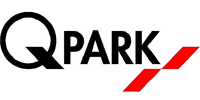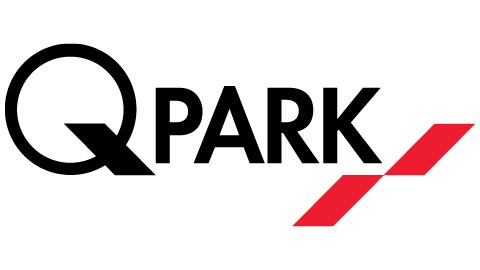
Dublin City Council have recently released their City Centre Transport Plan, Q-Park feel that they have the facilities and the know-how to make these policies even greener.
Their proposals are wide ranging and cover various transport and mobility methods. In essence the plan aims to reduce through-traffic traversing across Dublin City Centre. For example, those coming from the North of the City would be unlikely to be able to cross the Liffey and vice versa. However, as the Council have said during their consultation that the transport emphasis in Dublin is changing "while acknowledging that the economic life of the city needs to be protected during and after these changes". What they mean by this is that there will need to be vehicular access into the city centre for stakeholders that need it, for example suppliers and delivery companies. The Draft Plan also includes improvements in public transport links and promoting more active travel into Dublin City Centre.
Q-Park always welcome changes that improve the wider cityscape for visitors and residents alike and have led the way in the European Parking Industry when it comes to Sustainable Mobility. Using their vast experience Q-Park can make the following suggestions:
1) Reduce Search Traffic
Search Traffic in a City Centre is defined as vehicles who are searching for somewhere to park, they know the area in a city to park but do not have a specific parking space or car park in mind. This is usually applicable to all on-street parking but also off-street facilities. Search traffic is less environmentally as the driver circles around an area of the City Centre multiple times in order to find a parking space therefore driving more miles with more emissions generated. To reduce this on-street parking should be drastically reduced, with the exception of a few locations for Disabled Badge holders and booking parking online for off-street parking facilities should be encouraged. Booking and paying for parking in advance not only provides a better experience for customers at their chosen facility but it also means they are committed to where they are driving to and will therefore only drive those miles. Parking operators such as Q-Park have established online booking systems and there is also a growth in online aggregators offering the same service.
2) Encourage Electric Vehicles into the City Centre
Another way to reduce emissions from existing traffic is to encourage more Electric Vehicles onto the roads and into the city centres. It is well known that anxiety about range and charging infrastructure is the biggest blocker in the minds of many motorists when it comes to deciding whether to take the leap away from a petrol/diesel car to an electric vehicle. However, the infrastructure has improved hugely over the last few years and both the new and existing EV Charging Points should be promoted heavily to increase their usage. As an example, Q-Park have over the last 12 months installed new Charging Points across the majority of their Dublin parking facilities and their heavy promotion of them has seen a big uplift in their usage. A list of where to Park & Charge with Q-Park can be found here.
3) Provide Secure Bicycle Parking
Whilst encouraging active travel and introducing bike lanes reflects a growing recognition of the numerous benefits that cycling infrastructure brings to urban environments, it is also necessary to provide secure parking for them whilst they are not in use. According to the Dublin Cycling Campaign 20,000 bikes are stolen each year, far higher than the 5,000 bikes that are formally reported as missing. The vast majority are stolen from external areas in the City Centre, also not all employers have a suitable space for their employees to store them. In Dublin, Q-Park have already partnered with Dublin City Council to provide a secure area for bike parking in their The Spire parking facility. This unit is only accessible for customers who have subscribed to these services.
4) Encourage Car Sharing
Car Sharing is seen as the future of vehicular urban mobility. It allows those who cannot afford to own their own vehicle to hire one for a short period for any specific needs they have. Such as purchasing large items that cannot be taken on a bicycle or public transport. Car Sharing schemes provide mobility for low-income families and also reduce the number of private vehicles owned by City Centre residents. Q-Park already host Car Sharing providers across their Dublin parking facilities, including UFODrive, driveyou and Yuko.
5) Introduce Last Mile Delivery Hubs
The vast majority of vehicles that are seen in City Centres are usually delivery vans that are normally diesel powered and have to make numerous short journeys between various retailers, restaurants, bars, offices and residences. This is then very polluting for the local environment. A Last Mile Delivery Hub can be operated much more sustainably. These Hubs can receive goods from the main distribution facility from the existing fleet in order to be closer to the end delivery point. The contents would then be distributed using various smaller but fully electric vehicles who then continued the parcels journey onwards to its final destination using their greener vehicles. Some parcels were also delivered on foot if the distance was walkable. Again, Q-Park have vast experience of these types of schemes across Europe and would welcome the opportunity to do the same in Ireland.
As demonstrated, Q-Park has vast experience in aiding Sustainable Mobility, they have been a pioneer in repurposing parking facilities across Western Europe as Mobility Hubs and aim to the partner of choice of the public and private sector by 2030.
To find out more about the Q-Park Mobility Hub program click here.
About Q-Park
Q-Park is notable for its quality approach and has a portfolio comprising over 3,300 parking facilities with more than 640,000 parking spaces in the Netherlands, Germany, Belgium, Great Britain, France, Ireland, and Denmark.



